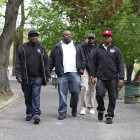
The Art of Interrupting Deadly Youth Violence
|
“I want these gang members to know it ain’t the only way,” said Rico, a 27-year-old standing in the doorway of a dusty bodega on Kingston Avenue in Brooklyn.
Juvenile Justice Information Exchange (https://jjie.org/tag/feature2/page/6/)

“I want these gang members to know it ain’t the only way,” said Rico, a 27-year-old standing in the doorway of a dusty bodega on Kingston Avenue in Brooklyn.

What started as a “Kickstarter-type” project quickly developed into New York City’s first ever film festival based solely on the topic of fatherhood.

The MacArthur Foundation announced it will increase its juvenile justice reform funding by some $15 million, a major part of which will be used to establish the new Models for Change Resource Center Partnership.
“Right now there are no go-to places to get the kind of information, resources, toolkits, [and] access to colleagues who have ‘been there done that,’” for would-be juvenile justice reform advocates, said Laurie Garduque, director of justice reform for the MacArthur Foundation.
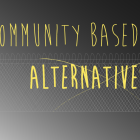
COVINGTON, Ga. -- This small community to the east of Atlanta isn’t necessarily the kind of locale one would associate with progressive juvenile justice policies. Yet here, deep in the rustic Georgian countryside, the local juvenile court has embraced an innovative model where keeping kids out of trouble, the courtroom and especially detention has become an utmost priority.

The Fatherhood Image Film Festival explores the complexities of being a father and positive male role model.

Is Calif. lock-up deliberately and illegally depriving wards of education as part of a solitary-confinement regimen?
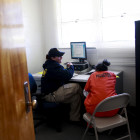
The de-emphasis of mental health funding is not an aberration across the United States. From 2009 until 2011, 31 states enacted major mental health budget cuts.

Grace Bauer had her entire world turned upside down when her son entered one of the nation’s harshest juvenile justice systems. Fueled by a burning desire to alter the system, she soon became one of the nation’s most impassioned crusaders for sweeping juvenile justice reform. Editor Note: This story is a continuation of the series Mental Health and the Juvenile Justice System: Progress, Problems and Paradoxes. Readers may also be interested in visiting the Juvenile Justice Resource HUB for more information about mental health and the juvenile justice system. --
The death of Grace Bauer's mother in 1998 triggered a cycle of grief that fully consumed her life for the better part of 15 years. “It became the mark we would measure time by,” she said. The pain, she said, was especially severe for her eldest child, Corey, who was 11 when his grandmother died.
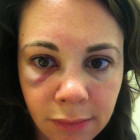
I knew I didn’t look good, but after a day of ice packs and Netflix, I was getting used to it. The curve of skin where my nose met my face had been cracked open. A bright purple crescent bloomed across my puffy cheek, swooping out from the inner corner of my right eye. “A girl did that to you?” my coworkers asked when I came back to the office, wincing at the sight. “Why?”
It was the same question I’d asked in the emergency room, waiting to find out if my nose was broken, and the same question I tried to answer a year later while reporting a story on girls in the juvenile justice system.
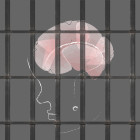
Are young people in the juvenile justice system with mental health disorders being properly diagnosed and treated?